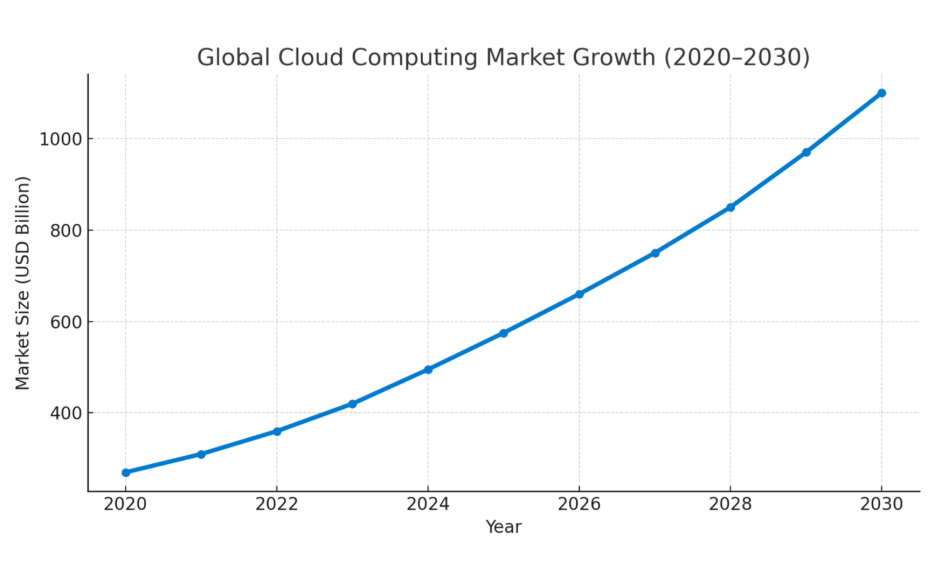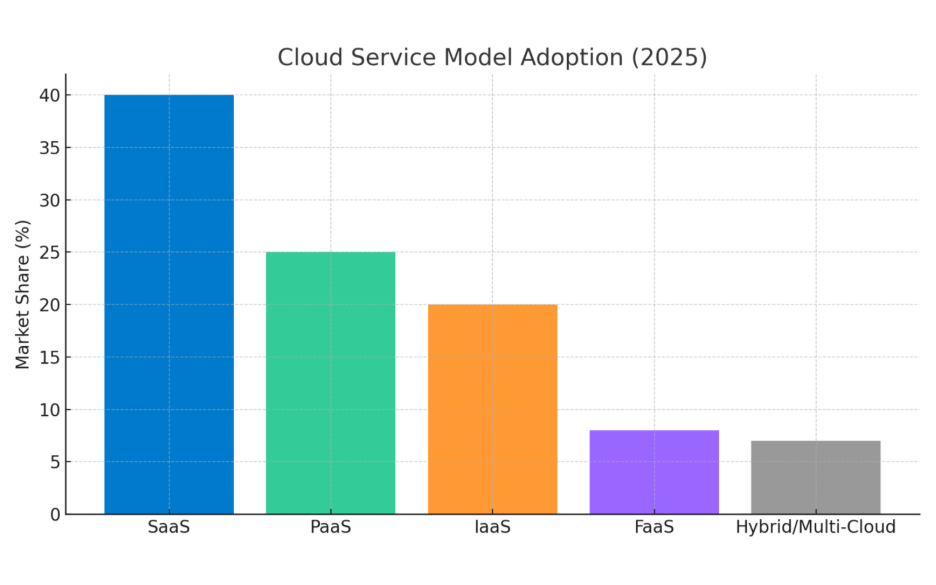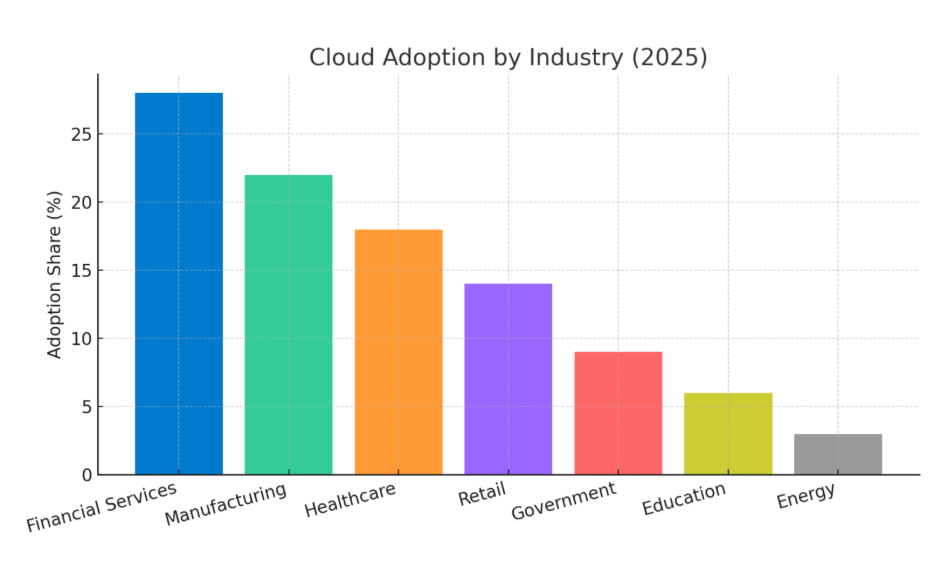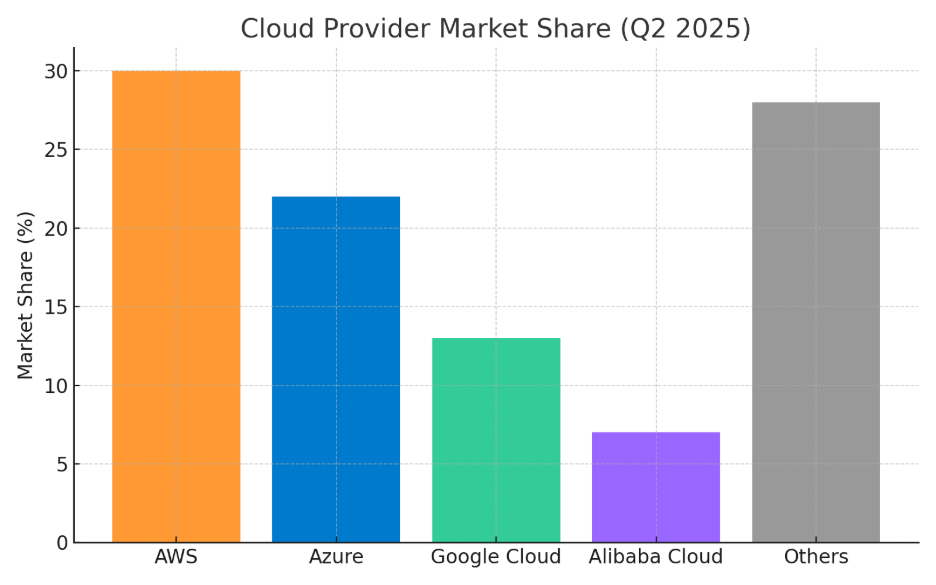Cloud & Platform Engineering
Building Secure, Scalable, and Intelligent Digital Foundations
At Sense & Respond Software, we help enterprises harness the power of the cloud — enabling agility, resilience, and innovation at scale. We build platforms that sense change, respond instantly, and scale effortlessly.
The Global Cloud Landscape (2024–2025)
Cloud adoption has entered its next phase — from migration to modernization.
Market Growth
Cloud Distribution
Multi Cloud Reality
AI & Cloud
Enterprises no longer ask if they should move to the cloud, but how fast and how smartly.
With hybrid, multi-cloud, and edge architectures defining the new normal, intelligent cloud engineering has become the foundation of every digital business.
Key Data Visuals
Cloud Market Growth

Cloud Service Model Adoption

Cloud Adoption by Industry

Cloud Market Share 2025

Our Experience-First Approach
Designing Cloud Ecosystems That Empower People and Platforms
We design cloud-native architectures using microservices, serverless, and event-driven models — modernizing legacy systems with containers, infrastructure as code, and CI/CD pipelines to optimize cost, scalability, and performance across hybrid and multi-cloud environments.
We continuously optimize cloud performance through AI-driven insights that monitor cost, usage, and efficiency — automating scaling, detecting anomalies, and improving key metrics like uptime and deployment speed to keep your cloud evolving with your business.
Global Perspective
India
- India’s cloud computing market surpassed $8 billion in 2024, driven by BFSI, Government, and Manufacturing.
- Major Indian states like Andhra Pradesh, Karnataka, and Telangana are investing heavily in digital infrastructure and public cloud platforms for governance and tourism.
- AP’s Digital Transformation Vision 2030 focuses on smart cities, citizen services, and e-governance — creating massive demand for cloud-native systems.
India Transforms Tourism and Hospitality Through AR/VR Magic.
United States
- The U.S. leads global cloud adoption with over $300 billion in annual spend.
- Silicon Valley and Texas remain innovation hubs for AI-cloud convergence and green data centers.
- U.S. enterprises drive platform engineering best practices that are now global standards for reliability, compliance, and performance.
From Silicon Valley to Space — The U.S. Pushes AR/VR Frontiers.
Experience that Lasts
AR/VR solutions blending authenticity, personalization, and continuous optimization.
Best Practices: What Works Consistently
In our experience delivering cloud solutions for enterprises across industries, success isn’t defined by migration speed, but by how intelligently the cloud is engineered for adaptability.
Living Cloud Ecosystems
We believe in designing cloud platforms as living ecosystems, not static infrastructures. Every system we build includes automated observability, chaos testing, and self-healing mechanisms to ensure resilience under real-world conditions.
Security by Default
We enforce security-by-default, embedding identity controls, zero-trust frameworks, and encryption from the first line of code.
Code-Driven Agility
To achieve true agility, we apply infrastructure as code and policy as code, giving clients the ability to audit, replicate, and evolve environments safely.
Sustainable Cloud
We also prioritize FinOps and sustainability, helping clients reduce waste through intelligent workload placement and renewable-energy-based hosting.
Human-Centered Design
Above all, we align every cloud design with human experience — ensuring developers can innovate faster and users experience reliability without complexity.
The Result:
This fusion of automation, governance, and empathy is what consistently drives our clients’ cloud success.
Lessons Learned: What Not to Do
In our global cloud transformation work, we’ve seen that most failures stem not from technology gaps, but from strategy misalignment and lack of lifecycle discipline.
Lift-and-Shift Trap
The most common pitfall is lift-and-shift without modernization — moving workloads to the cloud without redesigning for elasticity or automation, which leads to cost and performance debt.
Security Delays
Equally dangerous is ignoring security posture early, assuming governance can be added later. Breaches, misconfigurations, and compliance violations often emerge from this delay.
Vendor Lock-In
We’ve seen organizations overcommit to a single provider without a multi-cloud or portability strategy, losing flexibility and negotiating power.
Lack of Visibility
Others underestimate observability and cost visibility, leading to runaway bills and opaque performance issues.
Misaligned Teams
Lastly, the absence of organizational alignment — between IT, finance, and business teams — often kills momentum.
The Result:
Cloud transformation is a journey of cultural change, not just technology adoption.
